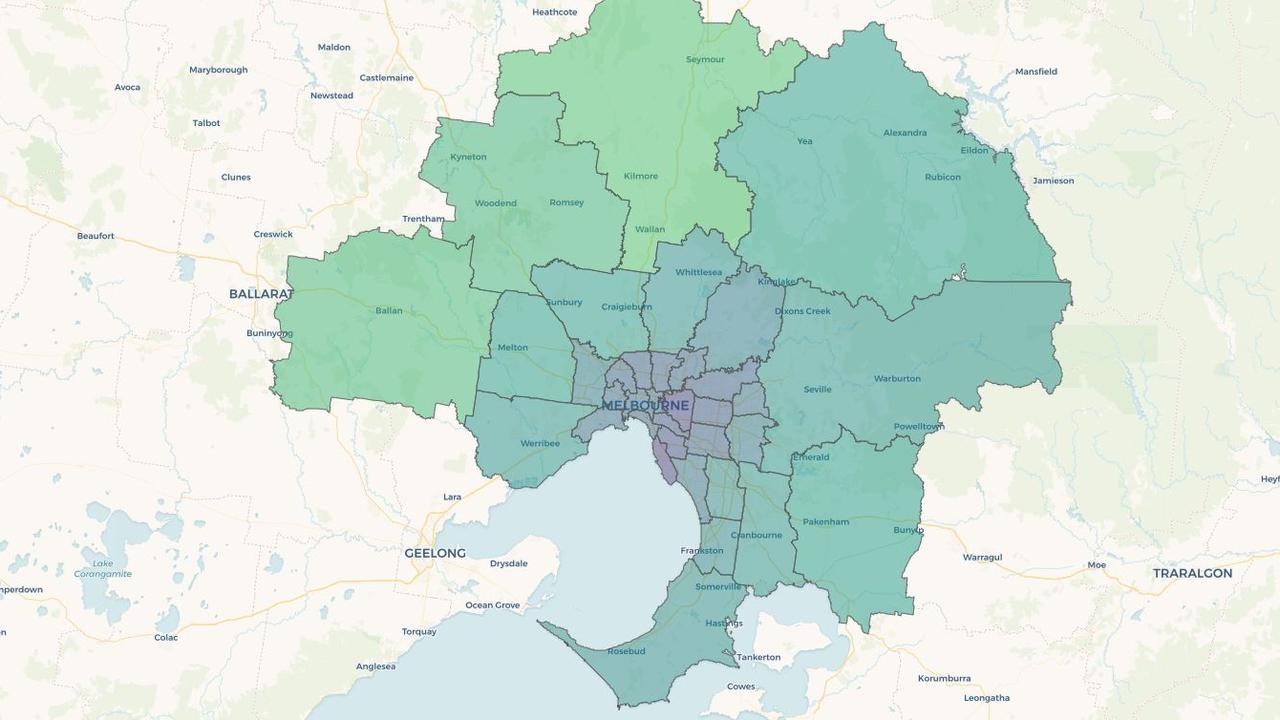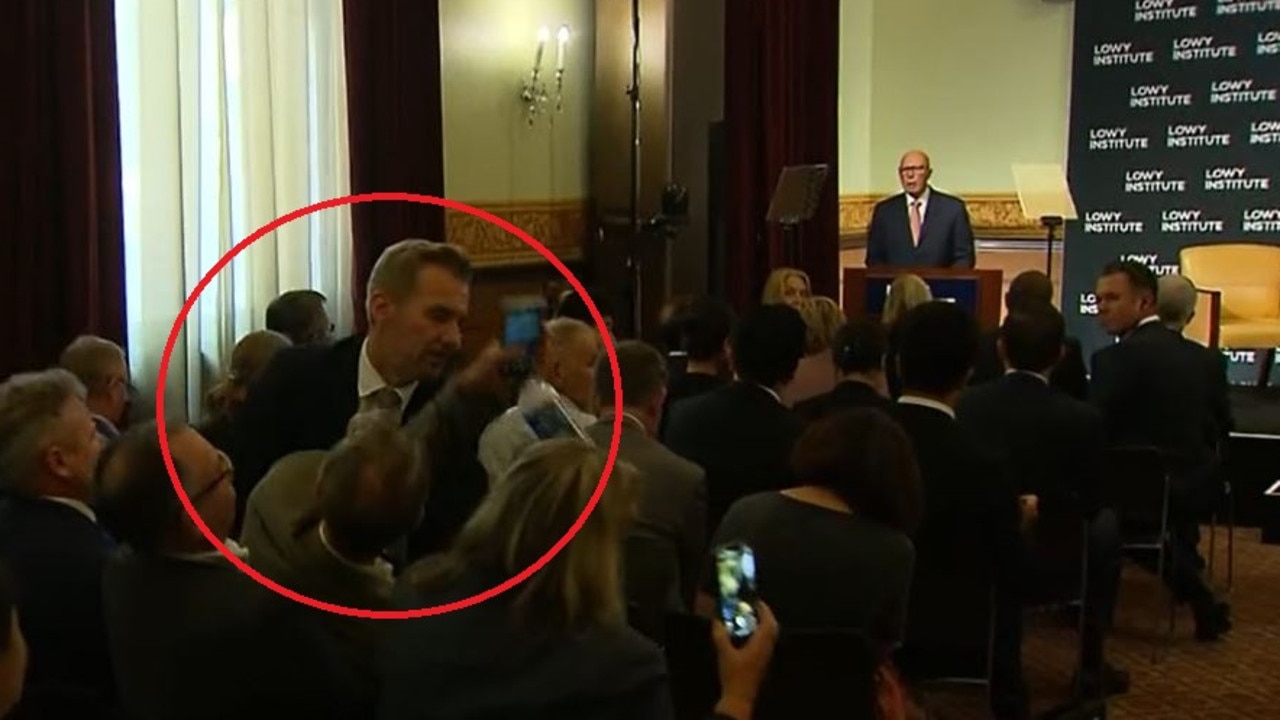New data reveals mobility in Sydney dropped more than in Melbourne during most recent lockdowns
New data has revealed the key differences between the lockdowns in Sydney and Melbourne - including the behaviour of people in each city.

Melbourne’s lockdown may have been fast and hard but new granular data has revealed that Sydneysiders actually hunkered down more with far fewer people travelling longer distances.
The research comes as Victoria reported 1838 cases on Friday – a record for Australia and above NSW’s wave peak of 1603 infections in a single day.
The analysis of movement in Melbourne could back up Premier Daniel Andrews’ claim that significant numbers of people were “doing the wrong thing” and moving across the city despite strict regulations.
AFL Grand Final weekend saw the second highest level of mobility over 10kms in distance in Melbourne since lockdown six began. Yet in Sydney, movement continues to be far below usual levels.
That’s despite accusations, particularly in the early weeks after Sydney’s stay-at-home orders came into place, that the city was in a “mockdown”. Pictures were beamed across Australia of people strolling past Bondi Beach to prove the point.
But Paul Rybicki, country head at analytics firm DSpark Australia, told news.com.au adherence to mobility restrictions was higher in Sydney.
“If you compare Sydney to Melbourne there’s definitely differences in compliance in terms of that radius of travel.
“You could argue that Sydney actually battened down the hatches more than other cities”.
DSpark’s data also revealed shadow lockdowns, where a significant number of people choose to stay at home in the days before actual lockdowns were announced.

Mobility key to lockdown
Decreasing mobility is one of the key metrics of lockdowns. However, accurately measuring movement is tricky. Some research focuses disproportionately on public transport or the use of transport planning apps – which can miss scores of journeys.
Mr Rybicki said DSpark, which has worked with various State Government agencies, pulled together both active data and passive measures including anonymised mobile phone movement.
“We ingest app and telco data, data from the public transport network, from the roads and from the census and we use that to look at how people move,” he said.
“We don’t see the whole population, we see a subset, but it’s more than enough to extrapolate.”
Trips over 10kms were chosen as that was the original distance limit for NSW and would show more significant journeys.

Shadow lockdown
“In the week before the Sydney lockdown, there was already a change in mobility,” Mr Rybicki said.
“Some people were self-selecting to go into lockdown. They knew something was going on and they decided to stay close to home and not go into the office anymore.”
In Sydney, mobility dropped 5 per cent in the weekdays before the lockdown and by almost 10 per cent on the weekend prior.
Once stay-at-home orders were announced mobility, unsurprisingly, plunged as distance limits came in.
In Sydney, weekday movement beyond 10kms dropped by 31 per cent during the first week of its lockdown in late June and in Melbourne by 26 per cent during their first week of reimposed restrictions in early August.
The numbers might not seem low but partly reflect that essential workers – like those in transport and construction – may have to travel further.


Sydney movement fell, but Melbourne by less
As the weeks went on movement further sank. By week five of Sydney’s lockdown – late July – weekday mobility further than 10kms was down by 51 per cent. That was its lowest point.
Local government areas like Liverpool, where many supermarket distribution centres are based, initially saw mobility drop by only a quarter. But when tougher restrictions were introduced, movement fell by more than half and was similar to LGAs in Sydney’s eastern suburbs and north shore where many could work from home.
But in Melbourne, weekday movement reductions never got that low. In late August, week three of lockdown six, there was only 27 per cent less mobility and it never went any lower.
Melbourne’s drop in movement was similar to what happened in Adelaide during its lockdown.
Melbourne kept moving on the weekends
An even starker contrast between cities can be found on the weekends when fewer essential workers are moving.
“If I look at Sydney you’re kind of down in the 60 to 70 per cents versus Melbourne which was in the 40s,” said Mr Rybicki.
The vast majority of Sydneysiders have not ventured more than 10kms from their homes since week three in early July.
By week six, mobility was down 72 per cent in the Harbour City (look up this data here).
But in Melbourne, the lowest weekend lockdown figure was a 43.5 per cent reduction in the first week.
On 25/26 September, AFL Grand Final weekend, mobility above 10kms was just 30 per cent down on usual and similar to the weekend before (you can see this weekend data here).
In contrast in Sydney on the weekend prior to the AFL Grand Final, travel by more than 10kms was down by 63 per cent and on 25/26 September by 61 per cent.
In late September, Victoria’s Covid testing chief Jeroen Weimar acknowledged Melburnians, soon to be living in the most locked down city globally, were exhausted of lockdowns.
“We know that everyone’s fatigued, we know everyone’s tired of this.”

Data reveals travel, not transmission
The difference in the cities is noticeable because more draconian measures, such as curfews, were not introduced widely in NSW.
Mr Rybicki pointed out that the data only revealed travel, not the reason for that travel nor necessarily transmission. Just because more people moved further in Melbourne didn’t mean that was the reason for rising Covid numbers.
“I don’t know whether they were more essential workers or whether the public health orders were different in those states in terms of who can and can’t travel.
“That needs to be taken into consideration before you jump to a conclusion to say it’s a compliance thing,” he said.
“But it is the observations that we see.”
Google mobility data has Victoria and NSW at similar levels with a near 40 per cent drop to retail outlets; 20-25 per cent fewer people in workplaces and a two-thirds drop in public transport usage. Its data is assessed differently to DSpark and looks at the state or LGA level, not whole cities.
Mr Andrews has repeatedly cited “rule breakers”, from protesters and footy fans to people visiting others’ homes, for being a driver of rising numbers. Certainly, those scenarios have led to infections. However, most of Victoria’s cases continue to be linked to educational settings, workplaces and families. Cases are concentrated in the city’s west and north west.
Will movement go back to normal?
The end of lockdowns are now on the horizon, but Mr Rybicki said it was unlikely movement would bounce back immediately.
“Across most of the states they’re getting to about 70 per cent back of pre-pandemic levels, but struggling to get beyond that.”
That figure includes Adelaide and Perth, where lockdowns have been shorter and you might expect commuting to snap back quicker.
More Coverage
“Sydney and Melbourne have gone through a harder lockdown for a longer period of time,” he said.
“Companies might be more open to people working from home,”
Sydney will undoubtedly move more once lockdown ends on Monday. But many Melburnians it seems, have already made the decision to move, lockdown or no lockdown.





